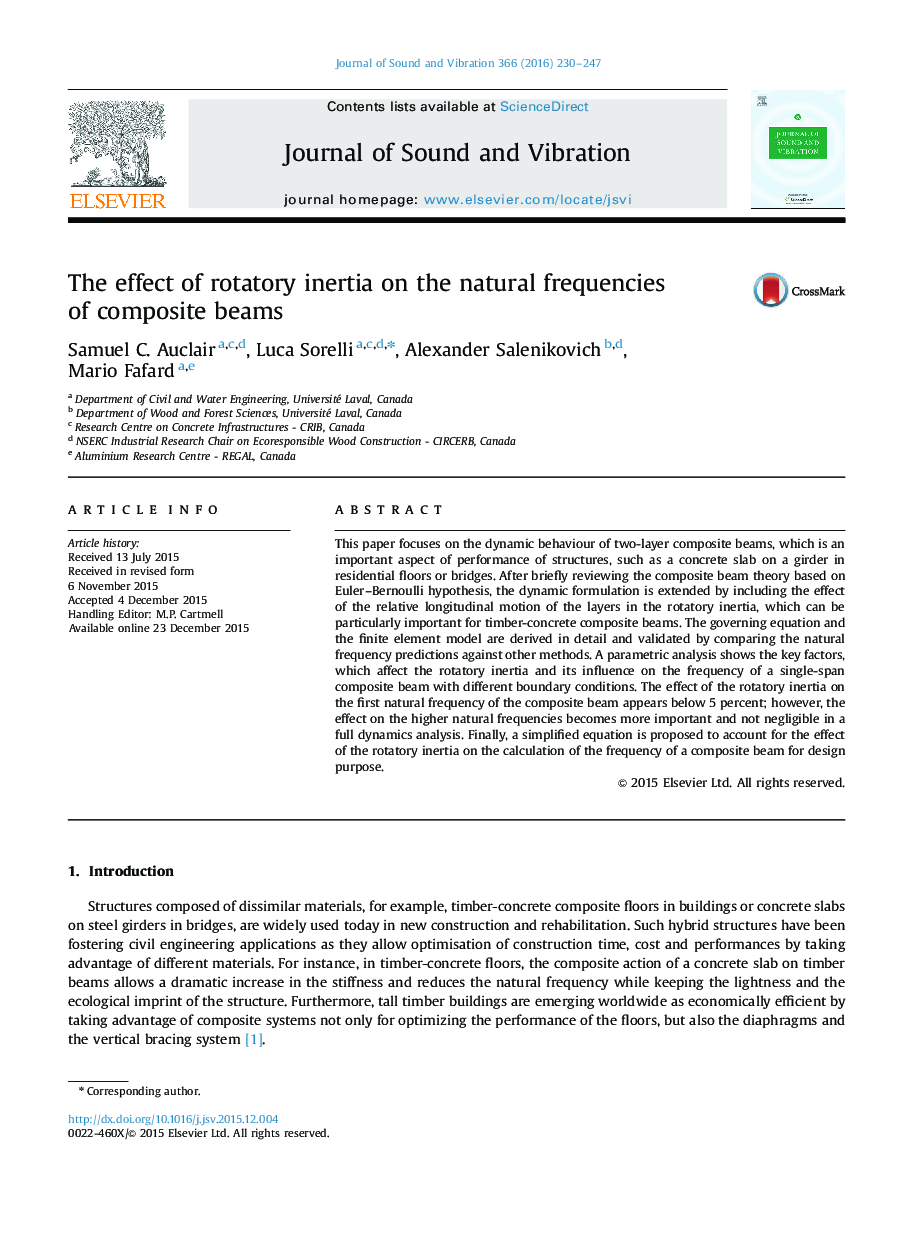| Article ID | Journal | Published Year | Pages | File Type |
|---|---|---|---|---|
| 287092 | Journal of Sound and Vibration | 2016 | 18 Pages |
This paper focuses on the dynamic behaviour of two-layer composite beams, which is an important aspect of performance of structures, such as a concrete slab on a girder in residential floors or bridges. After briefly reviewing the composite beam theory based on Euler–Bernoulli hypothesis, the dynamic formulation is extended by including the effect of the relative longitudinal motion of the layers in the rotatory inertia, which can be particularly important for timber-concrete composite beams. The governing equation and the finite element model are derived in detail and validated by comparing the natural frequency predictions against other methods. A parametric analysis shows the key factors, which affect the rotatory inertia and its influence on the frequency of a single-span composite beam with different boundary conditions. The effect of the rotatory inertia on the first natural frequency of the composite beam appears below 5 percent; however, the effect on the higher natural frequencies becomes more important and not negligible in a full dynamics analysis. Finally, a simplified equation is proposed to account for the effect of the rotatory inertia on the calculation of the frequency of a composite beam for design purpose.
